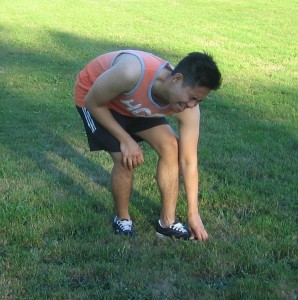Hallux rigidus or “stiff big toe” is a type of degenerative arthritis that results to stiffness and discomfort in the metatarsophalangeal joint. Since the condition is progressive in nature, the toe movement reduces over time which makes walking or standing unbearable.
The pain and rigidity might worsen during damp, cold weather and the joint might appear inflamed and swollen. A bump often forms on the top part of the foot and causes discomfort if shoes are worn.
What is the cause?

An exact cause for hallux rigidus could not be determined.
- It might arise due to overuse of the joint or after an injury such as spraining the joint or stubbing the toe.
- In some individuals, it runs in families and comes from inheriting a foot form or manner of walking that can lead to the condition.
- Osteoarthritis and other inflammatory ailments such as rheumatoid arthritis or gout.
Management of hallux rigidus
Prompt treatment of hallux rigidus generally includes these measures:
- Using the appropriate shoes with adequate space for the toes. Some find relief for the pain by wearing shoes with stiff soles. Women must avoid wearing high-heeled shoes.
- Place proper padding in the shoes used to limit movement of the big toe.
- Avoid engaging in high-impact activities such as jogging.
- Provide non-steroidal anti-inflammatory drugs (NSAIDs) such as ibuprofen to alleviate the pain and swelling in the big toe. In some cases, the doctor might suggest corticosteroid injections into the joint.
In case the rigidity and pain persists, surgery might be required. Shaving of the bone spur might help reduce the pain and preserve joint motion. Oftentimes, it might be required to cut or slice the bone to realign or shorten the big toe.
Generally, the individual can resume work between 4-8 weeks after surgery depending on his/her profession, activity level and response to surgery.
Prevention
Even though there is no precise way to prevent hallux rigidus, its progression can be slowed down with the following:
- Perform exercises to keep the joint mobile
- Adequate rest for the joint once it becomes sore or painful
- Wear properly-fitting shoes that have adequate space around the toes
In case the symptoms of hallux rigidus develops, a doctor should be consulted. Prompt diagnosis and treatment can guarantee successful treatment.
